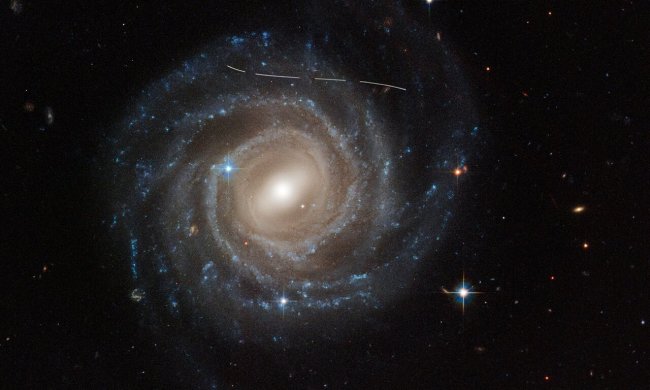The Hubble Space Telescope team has released another stunning space image captured by the instrument — this one of a globular cluster called NGC 1805. A globular cluster is an enormous collection of thousands of stars that are close together and bound in a spherical shape by the forces of gravity.
The stars in NGC 1805 are packed so closely that they are unlikely to have any planetary systems. They are 100 to 1,000 times closer to each other than our sun is to other stars.

This image is an example of Hubble’s capabilities to not only capture light in the optical wavelength, but also in the ultraviolet and infrared wavelengths. As the Hubble scientists explain: “The striking difference in star colors is illustrated beautifully in this image, which combines two different types of light: Blue stars, shining brightest in near-ultraviolet light, and red stars, illuminated in red and near-infrared. Space telescopes like Hubble can observe in the ultraviolet because they are positioned above Earth’s atmosphere, which absorbs most of this wavelength, making it inaccessible to ground-based facilities.”
The global cluster shown here is located close to the edge of the Large Magellanic Cloud, one of the closest galaxies to the Milky Way. It is gravitationally bound to our galaxy, so it is known as a satellite galaxy. The region in question is part of the Dorado constellation, named after the Portuguese term for dolphinfish, which can be observed from the Earth’s southern hemisphere.
This particular globular cluster is notable for an unusual feature — it has both older and younger stars within it. “Usually, globular clusters contain stars which are born at the same time,” the Hubble scientists said, “however, NGC 1805 is unusual as it appears to host two different populations of stars with ages millions of years apart. Observing such clusters of stars can help astronomers understand how stars evolve, and what factors determine whether they end their lives as white dwarfs, or explode as supernovae.”
Hubble previously captured another globular cluster, Messier 62, which also has an unusual feature of being exceedingly dense at its center.



